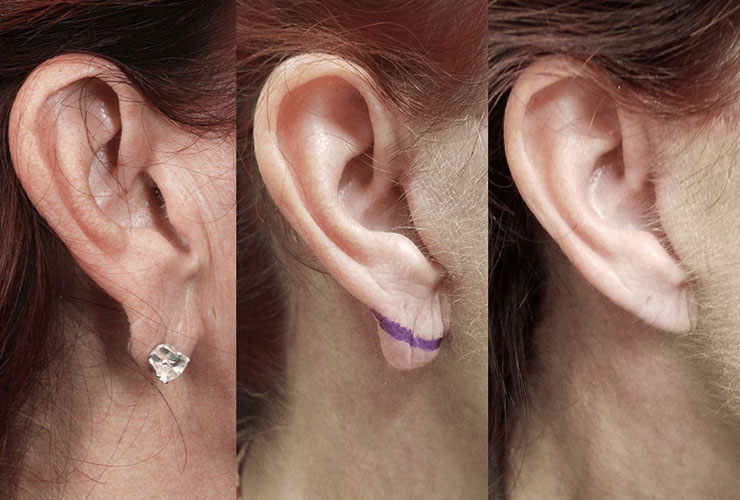Earlobe repair, also known as earlobe reconstruction or earlobe surgery, is a cosmetic procedure that is typically performed to repair damage or deformities to the earlobes. The most common reason for earlobe repair is to correct split or torn earlobes, often caused by trauma, heavy earrings, or gauge stretching. This procedure can restore the appearance of the earlobes and make it possible to wear earrings again. Here’s an overview of the earlobe repair procedure:
Earlobe Repair Procedure:
- Consultation The first step is to schedule a consultation with a board-certified plastic surgeon or a dermatologic surgeon experienced in earlobe repair. During this consultation, you will discuss your concerns, goals, and expectations for the procedure. The surgeon will also evaluate the earlobes to determine the most suitable approach for repair.
- Local Anesthesia Earlobe repair is typically performed under local anesthesia, which numbs the earlobe to ensure you are comfortable during the procedure.
- Incision The surgeon will make an incision along the damaged or split area of the earlobe. The incision is made precisely to ensure that the earlobe’s natural shape and contour are restored.
- Removal of Scar Tissue If there is scar tissue or irregularities present from previous piercings or trauma, the surgeon will carefully remove it to create a smooth and even earlobe.
- Suturing After repairing the damaged area, the surgeon uses fine, dissolvable sutures to close the incision. The sutures are usually placed internally to minimize scarring on the outer surface of the earlobe.
- Dressing A sterile dressing or bandage may be applied over the earlobe to protect it during the initial healing phase.
Recovery from Earlobe Repair:
The recovery from earlobe repair is typically straightforward, and most people can return to their normal activities within a short period. Here are some general guidelines for recovery:
- Pain and Swelling You may experience mild discomfort, swelling, and bruising in the treated area immediately after the procedure. Over-the-counter pain relievers can help manage any discomfort.
- Dressing Removal The dressing is usually removed after a few days, and the surgeon will inspect the incisions to ensure they are healing properly.
- Stitches If sutures are used, they are often dissolvable, meaning they will disappear on their own over time, so there is no need for suture removal.
- Earring Placement After the earlobe has fully healed, which typically takes a few weeks, you can have your ears re-pierced if desired. Your surgeon will provide guidance on when it’s safe to do so.
- Scarring Scarring is generally minimal and discreet. Over time, the scar tissue will fade and become less noticeable.
- Follow-Up Appointments You may need to attend follow-up appointments with your surgeon to monitor the healing process and ensure optimal results.
It’s essential to follow your surgeon’s post-operative instructions carefully to promote proper healing and minimize the risk of complications. If you’re considering earlobe repair, consulting with a qualified surgeon will help you understand the specific details of your procedure and what you can expect in terms of results and recovery.

